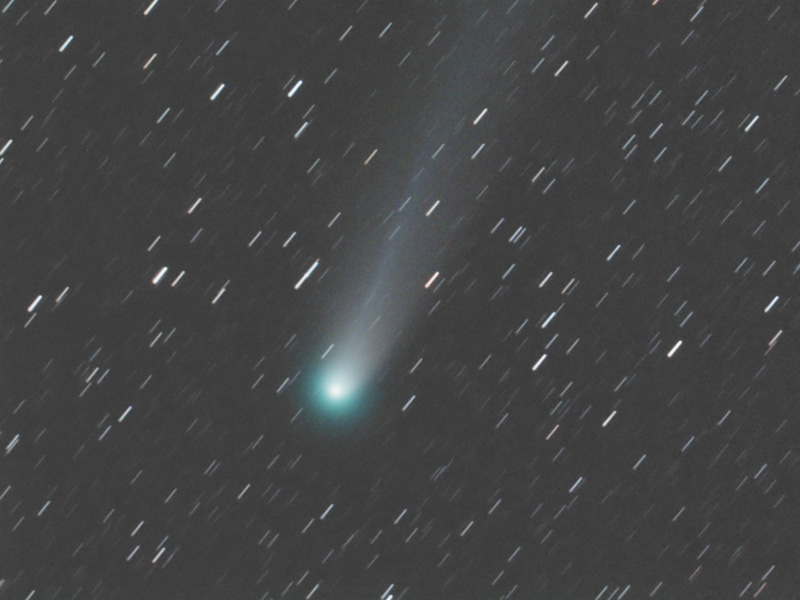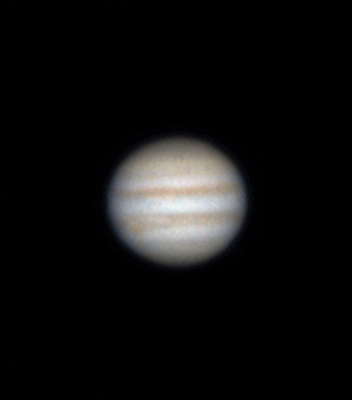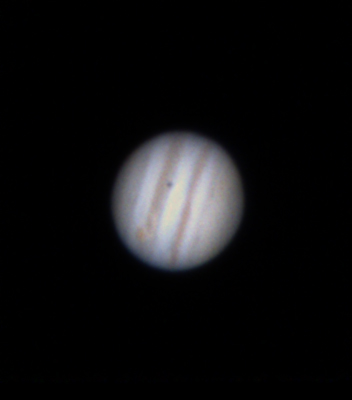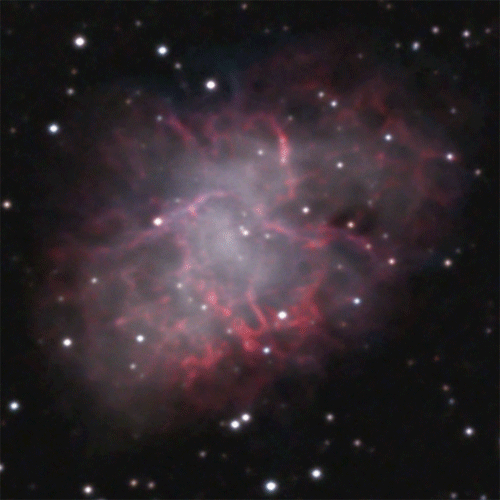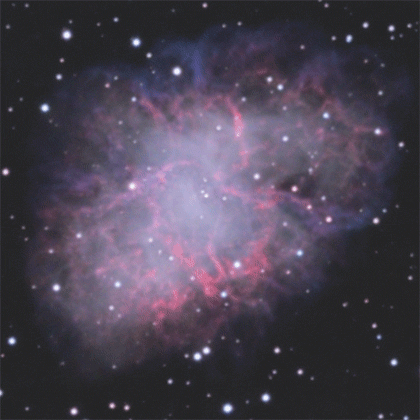seeing has improved from poor to mediocre
here's a bit better shot of Jupiter with moon Callisto and shadow transiting the face:
Try increasing gamma if dark sections aren't distinguished
Sunday, February 9, 2014
Sunday, January 12, 2014
the king is dead, long live the king...comet lovejoy
another comet of the century turned out to be a bust
but despite comet ISON's demise during it's pass by the sun
there's another comet out
while comet lovejoy is by no means comet of the century
it's one of the best comets i've been able to photograph from light polluted skies:
this one is fairly bright, but low in the sky
rises above my treeline at 15 degrees in the east at 5 AM, too bright to photograph by 6
so only had a narrow window to image it.
this is a stack of 20x2 minute exposures tracking on the head of the comet
which is moving relative to the stars, explaining the trails
here's an animation of the 20 individual frames aligned on the stars
showing the comet's motion (big file):
comet lovejoy motion
should remain fairly bright thru the month of january, rising higher in the sky
shame it's been overshadowed by ISON.
bill w
but despite comet ISON's demise during it's pass by the sun
there's another comet out
while comet lovejoy is by no means comet of the century
it's one of the best comets i've been able to photograph from light polluted skies:
this one is fairly bright, but low in the sky
rises above my treeline at 15 degrees in the east at 5 AM, too bright to photograph by 6
so only had a narrow window to image it.
this is a stack of 20x2 minute exposures tracking on the head of the comet
which is moving relative to the stars, explaining the trails
here's an animation of the 20 individual frames aligned on the stars
showing the comet's motion (big file):
comet lovejoy motion
should remain fairly bright thru the month of january, rising higher in the sky
shame it's been overshadowed by ISON.
bill w
Thursday, January 9, 2014
new year's sun spots, *solar winter storm warning tonight*
last year was the year of the solar maximum
peak in the 11 year cycle of sunspot activity
this is related to the sun's magnetic field flipping
water world with fire
which means this year is...
the year after the solar maximum
and still pretty good for solar activity so far.
took some relatively high power images of sun spots on new year's day:
there was some interesting activity just visible on the other edge:
the sun's surface rotates with a period of approximately 28 days when viewed from earth...
so here it is a few days later on 1/5/14 facing us:
 this was a big one which could be easily seen without magnification (looking thru filter)
this was a big one which could be easily seen without magnification (looking thru filter)
on 1/7/14 a coronal mass ejection was launched from this spot aimed right at us
as a result, tonight we're going to get hit by plasma consisting of charged protons, electrons, alpha particles and such...
which means major aurora activity tonight at the poles
there's a slight chance that you may see some activity if you live moderately far north
so take a look outside
you may see some strange lights
for more on this check out
http://www.spaceweather.com/
peak in the 11 year cycle of sunspot activity
this is related to the sun's magnetic field flipping
water world with fire
which means this year is...
the year after the solar maximum
and still pretty good for solar activity so far.
took some relatively high power images of sun spots on new year's day:
the sun's surface rotates with a period of approximately 28 days when viewed from earth...
so here it is a few days later on 1/5/14 facing us:
 this was a big one which could be easily seen without magnification (looking thru filter)
this was a big one which could be easily seen without magnification (looking thru filter)on 1/7/14 a coronal mass ejection was launched from this spot aimed right at us
as a result, tonight we're going to get hit by plasma consisting of charged protons, electrons, alpha particles and such...
which means major aurora activity tonight at the poles
there's a slight chance that you may see some activity if you live moderately far north
so take a look outside
you may see some strange lights
for more on this check out
http://www.spaceweather.com/
Monday, January 6, 2014
first light from new home: Christmas Jupiter
haven't imaged in about 6 months due to move/move/remodel... Jupiter is just past opposition now and should be in excellent position for viewing for the rest of January. Here's my first light image with a new camera from new location, Jupiter on Xmas night:
unfortunately, the seeing was terrible, amazed i was able to pull anything out at all. this is an animation of two shots taken about 30 minutes apart. shows the great red spot (lower left) just rotating into view.
here it is the next night (again terrible seeing)
you can see the great red spot lower left, Io's shadow upper mid, and a hint of Io just above and to the right of it's shadow.
cheers
unfortunately, the seeing was terrible, amazed i was able to pull anything out at all. this is an animation of two shots taken about 30 minutes apart. shows the great red spot (lower left) just rotating into view.
here it is the next night (again terrible seeing)
you can see the great red spot lower left, Io's shadow upper mid, and a hint of Io just above and to the right of it's shadow.
cheers
Monday, July 22, 2013
Crab Nebula Expansion
Here are 4 images over 6 years showing the expansion of the crab nebula, a supernova remnant.
Extrapolating the expansion back to time 0 gets close to the observed 1054 AD supernova. Note the bluish pulsar wind lower left, seems to be moving faster than the red filaments
Extrapolating the expansion back to time 0 gets close to the observed 1054 AD supernova. Note the bluish pulsar wind lower left, seems to be moving faster than the red filaments
Saturday, July 6, 2013
4th of july supernova revisited-crab pulsar wind
On July 4th 1054 AD, astrologers observed a bright blue square in the sky near the sun at dawn. it was visible during the day for 3 weeks and at night for 2 years. 700 years later, the Crab Nebula became the first object in Charles Messier's famous catalog:
What makes the crab nebula glow? The bluer of the two central stars is a dense neutron star,
the remnant of the original star that went supernova on the 4th, spinning at 30 revolutions per second. A strong magnetic field associated with the spinning star accelerates electrons in the surrounding space to relativistic speeds. Collisions between the electrons and surrounding matter give off very high energy photons. Rather than the central star, it is the photons from these collisions (EDIT: my physics buddies have informed me that it is the acceleration itself that causes the high energy photon emissions, no collisions needed) that cause the gas in the surrounding filaments to glow like fluorescent lights.
pulsar wind:
after making a few calls, trying to get a nice wide filter in this region, i found a custom filter would cost more than my camera. so i went with a narrow filter in the region that was available in order to capture this broad band signal. i had hoped to capture some motion with the filter, but the broad band emissions were so weak with the narrow filter, that i was unable to get enough detail on any given night (or two) to convincingly demonstrate motion.
here's my 2011 crab nebula animation showing some motion in the broad band.
happy 4th
-bill w
What makes the crab nebula glow? The bluer of the two central stars is a dense neutron star,
the remnant of the original star that went supernova on the 4th, spinning at 30 revolutions per second. A strong magnetic field associated with the spinning star accelerates electrons in the surrounding space to relativistic speeds. Collisions between the electrons and surrounding matter give off very high energy photons. Rather than the central star, it is the photons from these collisions (EDIT: my physics buddies have informed me that it is the acceleration itself that causes the high energy photon emissions, no collisions needed) that cause the gas in the surrounding filaments to glow like fluorescent lights.
pulsar wind:
enamored with the concept of the pulsar wind, i attempted to capture it with a filter which blocks the emission line signal, giving only the broad band pulsar wind. a quick look at the crab nebula spectrum shows a wide region devoid of emission lines
after making a few calls, trying to get a nice wide filter in this region, i found a custom filter would cost more than my camera. so i went with a narrow filter in the region that was available in order to capture this broad band signal. i had hoped to capture some motion with the filter, but the broad band emissions were so weak with the narrow filter, that i was unable to get enough detail on any given night (or two) to convincingly demonstrate motion.
in any event, the combined stack gives a nice view of the pulsar wind without the pesky emission lines obscuring the view. i find the blink fascinating, tracing the swirls, wisps and arcs of broad band emission, and then following them into the combined image.
here's my 2011 crab nebula animation showing some motion in the broad band.
happy 4th
-bill w
Thursday, June 20, 2013
sun and moon for summer solstice
this is the year of the solar maximum--maximum sunspot activity in the 11 year solar cycle.
10 pm pacific today 6/20/13 is the summer solstice.
what better time for solar images?
here are two images of the sun taken at about the same time with different filters.
first up, the sun in "white light", using a filter that blocks out 99.999% of the sun's light
you can see a few dark sun spots (which are still blindingly bright without filters), a slightly granular appearance, and a few lighter areas. this is the photosphere which is basically the surface of the sun.
the second image is the sun imaged with a hydrogen alpha filter that allows all of the sun's light at a specific frequency, which corresponds to absorption and emission of light due to hydrogen. this shows the chromosphere, a thin layer above the photosphere dominated by hydrogen emissions. it usually can't be seen as it is overwhelmed by bright emissions from the photosphere. the hydrogen alpha filter allows us to see the chromosphere's wavy filaments and prominences.
you can still see hints of sunspots, but there's much more going on.
next i colorized the image and then lightened it dramatically to show the faint prominences (things shooting off the disk around the rim). since this overwhelmed the central detail, the original darker image was superimposed to maintain some of the surface detail. bear in mind the prominences seen at the edge are much more faint than the central detail. the dark line upper right across the face is called a filament. it's basically the same phenomenon as a prominence, but coming off the surface towards the viewer rather than occurring at the edge.
last up is the full moon, which happens to be the same size as the sun, which is convenient for things like eclipses
and finding something to do with your solar rig at night.
this was taken with the same scope and camera as the first image, leaving off the filter.
why do astrophotographers rarely image the full moon?
the sunlight is shining straight down on the face which washes out the detail of landscape.
the sharp eyed viewer will note better contrast at the extreme bottom portion of the image
where a few shadows are cast enhancing detail in this moon that was 6 hours away from full.
have a good summer
whw
10 pm pacific today 6/20/13 is the summer solstice.
what better time for solar images?
here are two images of the sun taken at about the same time with different filters.
first up, the sun in "white light", using a filter that blocks out 99.999% of the sun's light
you can see a few dark sun spots (which are still blindingly bright without filters), a slightly granular appearance, and a few lighter areas. this is the photosphere which is basically the surface of the sun.
the second image is the sun imaged with a hydrogen alpha filter that allows all of the sun's light at a specific frequency, which corresponds to absorption and emission of light due to hydrogen. this shows the chromosphere, a thin layer above the photosphere dominated by hydrogen emissions. it usually can't be seen as it is overwhelmed by bright emissions from the photosphere. the hydrogen alpha filter allows us to see the chromosphere's wavy filaments and prominences.
you can still see hints of sunspots, but there's much more going on.
next i colorized the image and then lightened it dramatically to show the faint prominences (things shooting off the disk around the rim). since this overwhelmed the central detail, the original darker image was superimposed to maintain some of the surface detail. bear in mind the prominences seen at the edge are much more faint than the central detail. the dark line upper right across the face is called a filament. it's basically the same phenomenon as a prominence, but coming off the surface towards the viewer rather than occurring at the edge.
last up is the full moon, which happens to be the same size as the sun, which is convenient for things like eclipses
and finding something to do with your solar rig at night.
this was taken with the same scope and camera as the first image, leaving off the filter.
why do astrophotographers rarely image the full moon?
the sunlight is shining straight down on the face which washes out the detail of landscape.
the sharp eyed viewer will note better contrast at the extreme bottom portion of the image
where a few shadows are cast enhancing detail in this moon that was 6 hours away from full.
have a good summer
whw
Subscribe to:
Posts (Atom)

